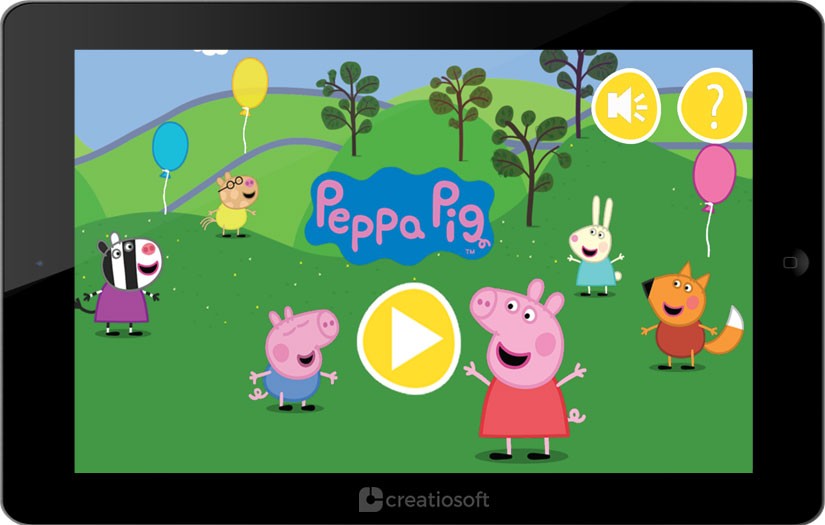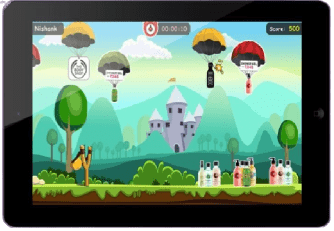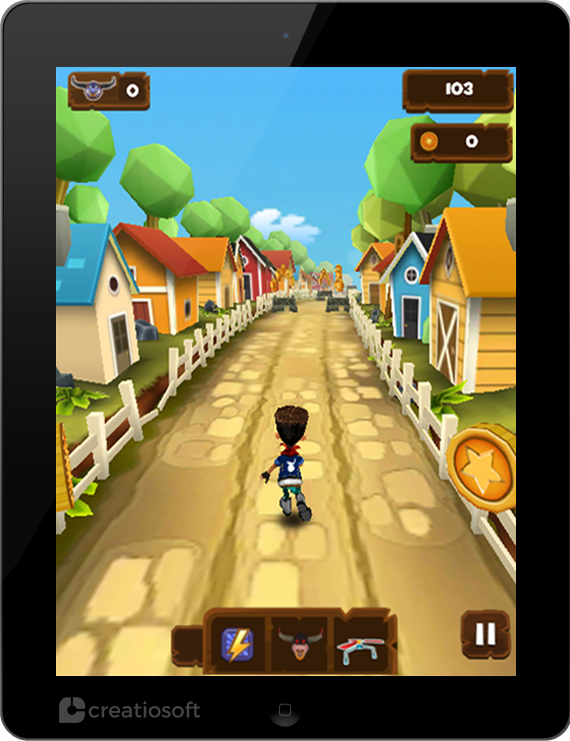Mobile gaming has grown to be one of the most popular sources of entertainment in the entire world. With technological breakthroughs, the mobile game development company always offers new and unique features. These features fulfil the ever-increasing demand for mobile gamers. Game creators must stay current with the latest developments in mobile game development. It leads them to build entertaining, immersive, and profitable games.
Game developers of the unity game development company are concentrating on providing players with an immersive and smooth gaming experience this year. They are adding new technologies. These are augmented reality, virtual reality, and artificial intelligence in their games to make them more realistic and engaging. Cross-platform gaming, cloud gaming, blockchain gaming, hyper-casual games, and the growth of gaming influencers are among the top mobile game development topics to watch in the coming year.
This post will look at this year’s top mobile game development trends. Developers may design unique and engaging games that appeal to today’s mobile gamers if they keep these trends in mind.
Let us now shift gears and focus on the top mobile game development trends:
Top Mobile Game Development Trends
1. Hyper-casual games:
Hyper-casual games are mobile games that are basic, fast, and easy to play. You can learn this gameplay in a matter of seconds. These games often include one-touch controls, basic visuals, and quick play sessions. They are frequently free to play, with income from in-app adverts or sales.
In recent years, hyper-casual games have grown in popularity. The numerous creators found success with titles such as Flappy Bird, Fruit Ninja, and Temple Run. Analysts predict this trend to continue in the coming year. The mobile game development company will continue to build new and unique hyper-casual games to attract the interest of mobile players.
Reasons for the rise in popularity of hyper-casual games:
Hyper-casual games have grown in popularity in recent years and are predicted to continue in the coming year. Here are some of the reasons behind the increased popularity of hyper-casual games:
- Simple Gameplay: Hyper-casual games often include basic, easy-to-understand gameplay mechanics. This makes them accessible to a broad spectrum of gamers regardless of age or expertise.
- Low Barrier to Entry: These games are frequently available for free download and play, with no in-app payments required. Because of the low entrance barrier, they are appealing to a vast number of players.
- Short Game Sessions: Hyper-casual games are intended to be played briefly, each lasting only a few minutes. This makes them excellent for persons with limited time, such as during a coffee break or commute.
- Viral Nature: Many hyper-casual games have a viral component to them. Also, the players publicize their scores on social media and push their friends to beat them. This contributes to the game’s growing popularity and reach.
- Easy to Develop: Compared to more complicated games, hyper-casual games are easier and faster to build. These factors make them appealing to developers and small game companies.
- High Revenue Potential: Although hyper-casual games are free to play, cash is generated through advertisements. These games may earn significant ad income for creators because of their high user engagement and popularity.
2. Artificial Intelligence and Machine Learning:
Artificial intelligence (AI) and machine learning are gaining popularity in mobile game development. These technologies enable the Unity game development company to build more dynamic and exciting gaming experiences. It also increases player engagement and profitability. Here are some mobile game development trends that include AI and machine learning:
- Personalization: AI and machine learning may be utilized to personalize the gameplay experience. Game developers can employ data analysis to analyze player behaviour and preferences. After then, adapt the game appropriately. This includes personalized content, difficulty levels, and prizes.
- Chatbots and virtual assistants: AI-powered chatbots and virtual assistants provide gamers with a more immersive and engaged gameplay experience. These virtual assistants may aid players with game navigation. They provide suggestions and even learn from player behaviour to better their recommendations.
- Predictive analytics: It is an AI that analyzes player data. Not only this, it predicts future results using machine learning algorithms. By recognizing trends in player behaviour and forecasting which players are most likely to churn, a mobile game development company may utilize predictive analytics to boost player retention and engagement.
- AI and machine learning: It is used to alter a game’s difficulty in real-time based on player performance. This can assist in keeping players focused and avoid dissatisfaction caused by either challenging or too easy games.
- Procedural generation: It is the use of algorithms to produce material dynamically. The mobile game development company can use this strategy to produce more diverse and engaging gameplay experiences. For example, procedural generation can generate random levels, missions, or opponents.

Examples of mobile games that use AI and machine learning:
Many mobile games use AI and machine learning to improve the gameplay experience. Here are several examples:
- Clash Royale: This real-time strategy game employs machine learning to change matchmaking depending on player skill levels.
- Pokémon Go: This augmented reality game uses machine learning algorithms to recognize and monitor the movements of Pokémon in the real world.
- Marvel Contest of Champions: This fighting game uses artificial intelligence to regulate adversary behaviour and make gaming more challenging.
3. Social Features:
Social elements are becoming increasingly significant in the mobile gaming business. They provide gamers with a more engaging and participatory experience. Here are some of the reasons why social aspects are vital to follow by unity game development company:
- Increased player engagement: Elements like multiplayer modes, leaderboards, and chat options can boost player engagement by giving them more opportunities to communicate with one another. Players are more likely to stick with a game if they feel like a community member and have social ties inside it.
- Increased player retention: Social elements increase player retention by instilling a sense of loyalty and devotion to a particular game. When players form a social bond with a game, they are likelier to stick with it and suggest it to their friends.
- Increased revenue potential: Social features bring new monetization options to game producers. Game creators, for example, might provide in-game products and awards to players who ask their friends to join the game or fulfil particular social challenges.
- Enhanced marketing opportunities: The social features can be leveraged for marketing purposes. The players who like a game are more inclined to share it with their friends and followers on social media. This can boost the visibility of a game and attract new players.
 Examples of social features in popular mobile games:
Examples of social features in popular mobile games:
Here are some examples of social features in popular mobile games:
- Clash of Clans: In this game, users may establish clans with other players and fight clan battles together. Players can also request and contribute troops to assist one another during fights.
- Candy Crush Saga: This game connects to Facebook and allows users to compete against their friends’ high scores. Players may even send lives to each other to assist them in succeeding in the game.
- Pokemon Go: It offers a social aspect called “Raids.” The users in this may join forces with other players nearby to battle and capture strong Pokemon.
- PUBG Mobile: It offers a social element called “Squads.” It allows players to band up with their friends and interact with one another during battles through voice chat.
4. Augmented Reality and Virtual Reality:
Augmented reality (AR) and virtual reality (VR) are two new trends that are used by the unity game development company. While they are both concerned with providing immersive experiences, their approaches differ.
AR includes superimposing digital components over the virtual environment using a camera or other input device. This is possible with technology such as computer vision and object recognition. Mobile games may utilize this technology to create experiences that include real-world factors, such as the player’s environment or actual items, in the game.
Virtual reality, on the other hand, is building a digital environment. In this, the user may immerse oneself via a headset or other input device. This technology has the potential to produce fully immersive experiences that take the gamer to another realm. VR technology is utilized by the mobile game development company to develop games that imitate real-world experiences such as flying, driving, or exploring a virtual area.
Examples of mobile games that use augmented reality and virtual reality:
Here are some examples of mobile games that use augmented reality and virtual reality:
- Pokémon Go: It is a famous mobile game that uses augmented reality (AR) technology to place virtual Pokémon in real-world settings.
- Harry Potter Wizards Unite: This augmented reality game allows users to perform spells and hunt for magical creatures in real life.
- Jurassic World Alive: This is an augmented reality game in which users may gather and interact with dinosaurs in real life.
- Mansion of Terror: Valerie’s Revenge is a virtual reality game where players explore a haunted mansion and solve riddles to escape.
5. Monetization Strategies:
Monetization is an integral part of mobile game development. It allows creators to make income and support the growth of their game. Here are some of the most frequent monetization tactics used by the mobile game development company:
- In-App Purchases (IAPs): This monetization approach involves selling virtual products. These are coins, gems, power-ups, or skins within the game. Players may buy these things with real money or in-game cash. They can earn them during gameplay or gain them through other ways, such as viewing advertising or completing surveys.
- Advertising: This revenue approach involves advertising to players during gameplay or between stages. Adverts might be in the form of videos, banners, or interstitial adverts. The Unity game Development company can receive money based on the number of impressions or clicks.
- Subscriptions: This monetization method involves charging gamers a monthly or yearly subscription to gain access to premium material or unique features. A game creator, for example, may charge a monthly membership fee to provide gamers access to unique levels or special in-game events.
- Sponsorships: This revenue method is collaborating with businesses or marketers to promote their products or services within the game. For example, a Unity game development company may collaborate with a clothing business to provide players with virtual apparel items that can be purchased with real money.
- Pay-to-Play: This monetization approach involves charging users a one-time price to download and play the game. After purchasing the game, users access all its features and material.
Examples of successful monetization strategies in mobile games:
Here are some examples of successful monetization strategies in mobile games:
- Candy Crush Saga: This game employs in-app purchases to sell players more lives, power-ups, and access to new levels.
- Pokémon Go: It earns money through sponsored places and in-app sales of luxury products such as Pokéballs, incense, and lucky eggs.
- Clash of Clans: This game combines in-app purchases and adverts to generate income. Players may purchase gems to speed up building time frames and other virtual items. The game also provides incentive adverts to promote participation.
- Fortnite: This game allows users to spend real money to buy skins, emotes, and other virtual stuff.
 Wrap-up:
Wrap-up:
The mobile game business is continuously growing. Staying current with the newest trends is critical for mobile game development companies that wish to produce profitable games. This year, we’re seeing a continued emphasis on new technologies like augmented reality and virtual reality. The increase in emphasis on player engagement and retention via features like social play and live events is also the point of focus.
Monetization tactics are essential. It is used with in-app purchases, advertisements, and subscriptions, all proving to be effective models. As the mobile game market continues to expand and evolve, creators must stay aware and adaptive to design games that appeal to players and produce income. The Unity game Development company may continue to succeed in this fascinating and fast-changing market. They can do it by embracing these trends and implementing novel methods in game production.
FAQ’s:
Q: What are the top mobile game development trends to watch in 2023?
A: The top mobile game development trends for 2023 are cloud gaming, AR, VR and AI-powered game creation.
Q: Why is cloud gaming a trend to watch in 2023?
A: The ability to broadcast games straight from the cloud eliminates the need for expensive gear, making cloud gaming a trend to watch in 2023. We at Creatiosoft see this trend as a chance to reach a larger audience and offer more user-friendly gaming experiences.
Q: How will augmented reality and virtual reality impact mobile game development in 2023?
A: We as a mobile game development company believe that augmented reality and virtual reality will greatly influence the creation of mobile games in 2023.
Q: What is the significance of 5G technology in mobile game development?
A: The importance of 5G technology in mobile game creation is acknowledged by unity game Development company. Thanks to lower latency, more dependable connectivity, and faster download and upload rates, games can be downloaded quicker and played with fewer hiccups.













